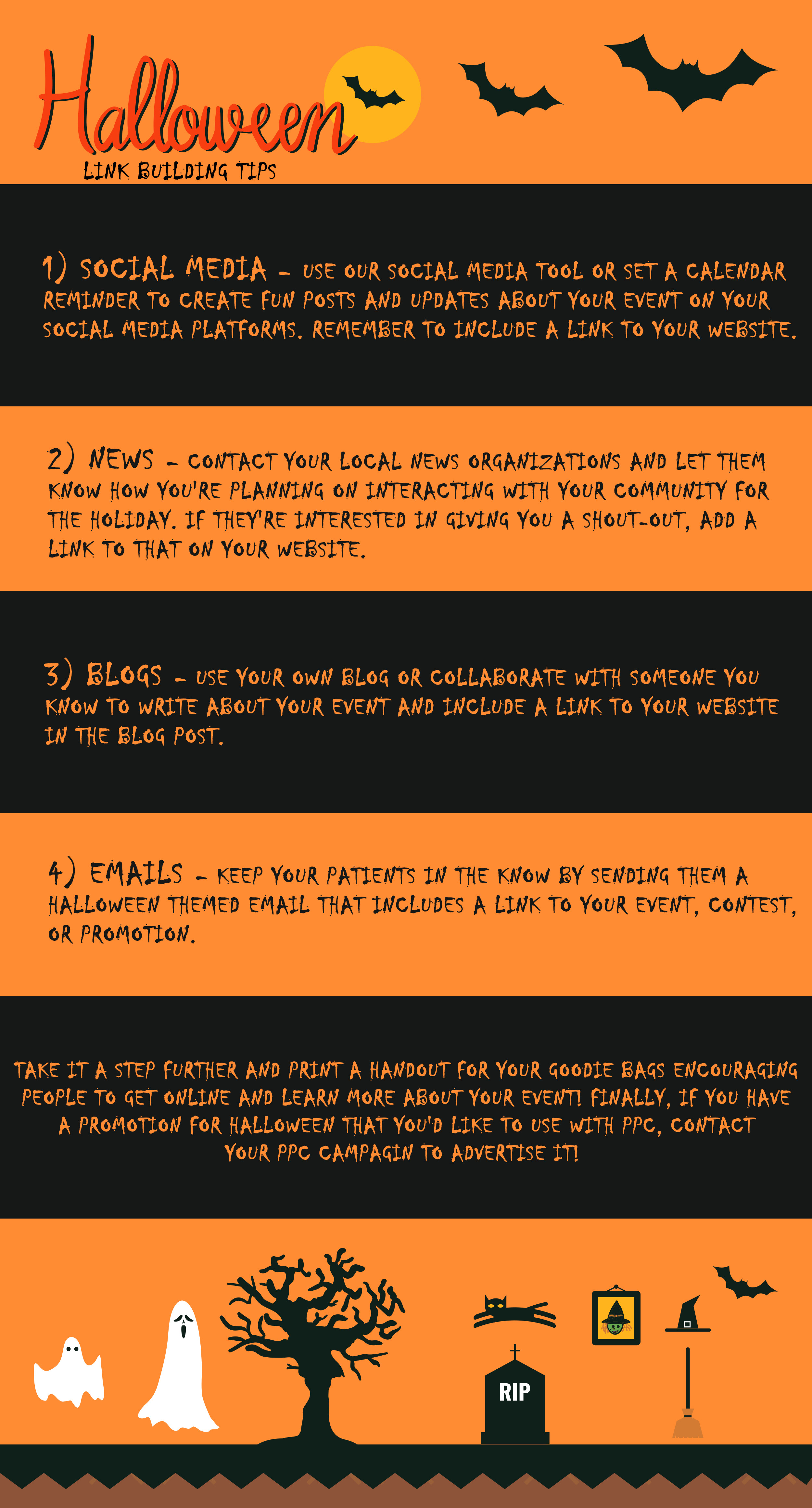Defining Click-Through Rates
Posted by jjohnson on November 9, 2017
Defining Click-Through Rates
You may be wondering what a click-through rate (CTR) is and why it’s important when it comes to your marketing efforts. A CTR is the ratio of clicks on a link compared to impressions in your campaign. A vast array of factors can influence it and unfortunately, some are out of your hands. However, there are some things you can do to strategize for improving your CTRs.
How do I know if my CTR is good?
A low ad CTR is problematic, as it can drag down your quality scores and affect future ad placement. Low CTRs signal a lack of relevance for your ad viewers. It means they aren’t inspired to click on your ad, visit your landing page to learn more about your offer, or take the desired action you’d want them to.
On the other hand, a high average CTR across your campaign or for a specific keyword doesn’t always mean success. It is simply one indicator that, when combined with other key performance indicators (KPIs) can lead to the success of your campaign. However, high average CTRs with low conversions might actually mean that you’re wasting ad spend by attracting people who are less likely to convert. This can be caused by targeting that is too broad, ad copy that is irrelevant, or a combination of both.
Average CTRs can also affect future ad performance, since Google uses your historical data to calculate their own expected CTR, essentially how likely your ads will get clicks when shown for specific keywords. Better keyword targeting and negative keyword discovery can help you improve your CTRs, thereby reducing wasted spend, and improving your quality scores.
What is the average CTR?
According to Google’s AdWords, average click-through-rate is 2%, so anything over 2% is considered above average. However, it’s important to note that the average CTR, as well as other key metrics, like conversion rate, can vary widely by industry because some industries are more competitive than others. The best way to know if your CTR is higher or lower than average is to look at industry-specific benchmarks.
What factors matter in CTR?
There are several factors that can contribute to your CTR: how well your ad copy is written, how targeted your keywords are, and where your ad is placed.
Competition is also one of the biggest factors.. If you are an Invisalign provider and you use the keyword Invisalign in (your city), you’re going to have a lot of competition. You may get a lot of impressions, but there will be so much competition that you aren’t likely to get very many clicks. With that, if you focus on common words, it’s more than likely that you will have to pay much higher bids to have your ad placed somewhere it will be seen, like the first page of search results.
How do I improve my CTR?
-
Focus on your keywords: One way to improve your CTR is by avoiding common keywords that are highly competitive. Instead, use targeted keywords that actively describe your product or service. For example, with an iPhone case, you could try something like, “Pink Sparkly iPhone Case”. You may get fewer impressions, but your CTR will be higher because you are targeting people looking for a specific product and your bid for more specific keywords will be less, which means saving on costs.
-
Rewrite your ad: Make sure your ad is written clearly and includes a strong call to action. This can be done by using words and phrases like: save today, buy, sign up, order now, or book now, depending on what you want your customers to do. Using incentive-based words helps encourage people to go from passive viewers of an ad, to active clickers.
-
Know your goals: Just like getting in shape, getting a higher CTR is easier if you keep your goals in sight. Take the time to define your PPC goals, evaluate the clarity of your landing pages, know your keyword strategies, and then be ready to track and test different variations of your ad.
For more tips on improving your CTRs, feel free to contact our Sesame SEO team!
Halloween Link Building Tips
Posted by ryanz on October 24, 2017

What are search engines looking for?
Posted by ryanz on September 25, 2017

Search engine optimization (SEO) is the practice of increasing the quantity of traffic to your website through organic search engine results. The purpose of SEO is to increase website traffic, expand brand awareness, and improve rankings.
Oral health providers need to invest in a dynamic SEO strategy to be able to meet their current and potential patients where many of them are: are- online. Most online users are searching for new health providers on the go. In fact, the amount of mobile search traffic is likely to exceed that of desktop computers in the foreseeable future. Search engine optimization for local search is more prevalent than ever before for any local business model.
So, in order to ensure you’re making the most of your SEO strategy, it’s important to know what search engines are looking for. Let’s take a look:
1. An SEO Friendly Site
Create a quality user experience, with cross-device compatibility using responsive design. A responsive site’s layout changes depending on the type of device used to view it. This creates an optimal user experience whether a potential patient is searching for you on their desktop, tablet, or cell phone. As a result, it allows your content and contact details to be well-displayed no matter the size or shape of the screen.
2. Unique Content
Typically, most dentists and orthodontists use the same library content to describe their common procedures. No matter how successful your practice is, rankings will plateau when Google re-crawls their search engine and realizes that the content you have isn’t tailored to your practice specifically.
It’s imperative you know who your audience is and monitor your targeted keywords. If your local listings and website are optimized for keyword queries that your target audience searches for, then you should show up in search engine results. Additional content beyond your common procedure pages, like case studies and patient reviews, are especially useful for establishing the personality of your practice's brand image. Case studies can showcase the incredible work that you do, and patient testimonials and reviews can further speak to that. Not only will they foster an idea of your office culture and values, but will also encourage prospective patients to easily engage with your practice online even before they give you a call.
A potential patient wants to know why they should start treatment with you, and whether your practice is able to meet their specific needs. By providing a variety of information about how your practice operates and the kinds of results you produce, they are likely to spend a longer amount of time on your website doing their due diligence. By increasing their time spent on your website, you are also increasing the likelihood that they will pick up the phone and give you a call.
3. Meta Descriptions and Title Tags
Title tags are used to tell search engines and visitors what any given page on your site is about in the most concise and accurate way possible. This title will then appear in various places around the web, including the tab in your web browser.
Metadata is important because:
It has the most SEO power of any tag on the page for establishing keyword relevance
Its contents are the source for the blue-link text shown in the search engine results pages (SERPs)
It’s the best place to get a concise description of the content on the page
As a part of your Sesame SEO service, your designated specialist will create unique meta titles and descriptions that are the optimal length for your site.
4. A Quality Link Profile
When Google crawls a website they check the page’s content as well as inbound and outbound links to conclude your relevancy to keyword searches. This means that even though you may be the top provider of a service in your area, another doctor who has created a successful online campaign through link building with social media & local community programs might rank better. Why? Because with an effective only campaign like that, Google’s perception is that they are the more trusted and preferred brand.. That’s why it’s important to get links from reliable sites that point back to yours, and to combine this with building a couple of links from a number of smaller websites.
All that being said, here are some ideas you can use for link building:
- Charities
- Local schools
- Community events
- Associations or organizations you work closely with
- Better Business Bureau
- Chamber of Commerce
- Online community newspapers that have mentioned your practice
- Community bloggers that have mentioned your practice
Having other websites linking, AKA pointing, to yours is a huge way to generate more traffic and better rankings. Do you sponsor clubs, charities, or organizations? If these groups are willing to link to your website on theirs, our SEO Team can link to them on your "Meet the Dr." page where you can touch on your community involvement. The links gained are all the more powerful when the anchor text in the link contains keyword phrases that describe the nature of the page or the site gaining the links.
5. Schema Markup
Schema is a collection of HTML coding tags that can be added to your website to highlight key information about your practice. As a part of your SEO service, we add schema markup to your contact information to highlight the fact that you are a local business and a doctor, as well as testimonial schema that highlights patients who have left you five star reviews.
Here at Sesame Communications, our dedicated team of SEO specialists stay on top of the latest Local SEO strategies in the industry. If you have any further questions, please don’t hesitate to reach out to our SEO Team for more tips and tricks on how to conquer SEO strategy!
Upon Further Review: Reviews Help Raise Your Practice Above the Rest
Posted by ryanz on September 13, 2017

There’s probably no doubt in your mind that you consistently give five-star service to your patients during every visit. The question is, does the internet know that? What about a prospective patient who is looking for their next dentist through Google, Facebook, or Yelp?
We live in an age where almost everyone takes to the internet to find the best of everything. The best restaurants in the city, the best television for their living room, or the best trails to hike. The internet is a great resource for finding a moderately unbiased opinion of what’s worth investing time and money in.
That being said, generating online reviews for your practice is especially important these days so that prospective patients can learn about how great you are.The best way to stand out online is to have a profile (Google, Facebook, and/or Yelp account) with multiple patient reviews. Having a five star ranking can goa long way when it comes to persuading someone to choose your practice over someone else’s.
Providing great service is the easy part, the difficult part is getting your satisfied patients to leave a review online. Here are a few ways to get your patients to spread the good word about your business:
- Dangle the carrot – Incentivizing your patients to leave a review can be helpful. For example, if someone leaves a review, you can put their name in a hat and enter them in a drawing for a gift card to a local coffee shop or any other prize of your choosing.
- Staff stars – Incentivize your staff. Maybe buy lunch for the team if your practice gets a certain amount of reviews within a set time frame.
- Window dressing – Make a sign to put on your window that tells patients to leave a review if they loved the service you provided.
- Y’all come back now, you hear? – As your patient is scheduling their next appointment, mention how great it would be to get a review from them online. This works really well with patients that have a good rapport with you and have been going to your office for years.
When it comes to your brand image, being online is simply a portion of the battle. It’s one thing to tell prospective patients how great you are online, but having satisfied patients tell others how great your practice is will help take your online presence to the next level.
If you have questions about how to generate online reviews, our Sesame Social team is here to help!
Citation Management: Manual vs. Aggregator
Posted by ryanz on September 12, 2017

You might be wondering, why do I need citation management? Well, local search results are dependent on healthy citations and leads in order to improve rankings, website traffic and ultimately, conversions. Good citation management allows your community to have an accurate impression of your business instead of being misdirected by incorrect or duplicate listings. If you have decided to outsource this vital project, let us help you decide which company is right for you.
Manual Submission - The process of claiming or updating citation directly on each directory site. It is typically done one site at a time by your third party agency.
- Pay per site
- Ownership of each submission for future updates (Sesame SEO Note: Do not use a manual submission company that does not guarantee that your listings belong to you once you complete your relationship.)
- Customize submissions to sites that meet your business goals
- A representative can manage removing duplicate listings
- Listings are live immediately after submission (Sesame SEO Note: There are always exceptions, some directory sites require a review from their site editor.)
- Owned submissions do not lose ‘trust’ with search engines (Sesame SEO Note: It is still good practice to login and review your information periodically. Some companies will offer a ‘hosting fee’ to do this for you.)
Data Aggregator - Local Data Aggregators (LDAs) are sites you can subscribe to that will collect the information you provide them with and distribute it to a set of directory listings in their network.
- Pay one fee for submission
- Listings are created in mass but unclaimed (Sesame SEO Note: This will require you to re-submit your listing to every site in your subscription for updates.)
- Every site within the LDA network will have the opportunity to pick up your data
- Automated logic to manage duplicates in their database (Sesame SEO Note: You will want to verify your information is appearing correctly on individual sites.)
- Each LDA varies but overall it takes between 1-6 months for listings to appear after submission
- After 12 months your data loses ‘trust’ and may alter data if they find new information from a different source
What would Sesame’s SEO team recommend? Part of your SEO service is a manual submission to Google and Bing and a submission through the LDA LocalEze. If you are outsourcing your citation management, we recommend using a service that compliments rather than duplicates your efforts. A manual submission company will allow you to provide a list of the sites you are already managing (through us) and request a recommendation on the sites they can additionally provide you.
The Evolution of Social Media
Posted by ryanz on September 5, 2017

Have you ever wondered how social media platforms came to be? Some social sites have come a long way since they first came out, while others are barely hanging on, or simply no longer exist. So why is that some of them flourished, while others fizzled out? It all comes down to effectively connecting people and creating a relevant, user friendly platform. Let’s take a look at some of the history.
One of the first popular social networks, Myspace, began in 2003. It was started by a group of employees from an internet marketing company. It was a place where you could create a personal, online profile and connect with friends via photos, music, and messages. A year after its launch, the amount of registered users reached one million. Myspace didn’t slow down until late 2007, when its competitor, Facebook started picking up speed online. Soon after that, the company was bought out by Google, and then later sold to Specific Media. Nowadays, Myspace has veered away from being a social network, and has instead become a place for musicians to host their music for fans.
There’s no denying the popularity of Facebook. “The Facebook”, created by Mark Zuckerberg during his days as a college undergrad at Harvard, launched in 2004 as a social network to bring Harvard students together. The website took off quickly, and in a month's time, over half the undergrad population was signed up on the site. Soon it extended to other universities across the country, and eventually it became the open network that you know and love today. Facebook has been thriving even more in recent years, adapting quickly to meet the needs of their audience. It now has over one billion monthly users.
Twitter began it’s journey as a social media network nearly six years ago. It was created by a group of programmers who worked at a podcasting company. The idea was to send one text message that would go out to multiple people at once. This is why tweets can only be 140 characters long, because 160 was the SMS limit while still leaving room for the username. Since its launch, Twitter has transformed into a multimedia platform that now has over 300 million active users each month. These days, it’s most popular for being an efficient, quick news aggregator and a place to follow influencers, celebrities, and even world leaders.
Snapchat also started off as a small platform. Similar to Facebook, it evolved rather quickly from a small idea that emerged from a group of friends at Stanford. This phone app is known for being targeted to teens that are trying to escape Facebook, a platform that they feel has been infiltrated by their parents. It’s now become the fastest growing social network for millennials, and has over seven billion video views every day. With fun additions like filters, Snapchat is quickly making a name for itself in the advertising world as well. It’s not uncommon for a movie, event, or business to create it’s own filter to promote themselves. It’s quick, but it’s effective.
Instagram, launched more recently in 2010 by two California residents, Kevin Systrom and Mike Kriejer. Within just a few short months, the phone app reached 1 million users. Since then, a variety of updates have been included on this platform to make it more interactive for users. More recent updates include a new look for their icon, an analytic tool, the instant translation feature, the ability to filter comments, and the addition of multiple images along with video stories onto the timeline. Like Facebook, it’s a place where businesses are becoming more present. It looks like this is just the beginning for Instagram.
As years go by, social media platforms will continue to evolve. The most popular networks we have today might look completely different, or may not even exist in a few years. As technology improves, new ideas and tools will be created that could change how social networking and social marketing works. Adjusting to trends, and new audiences will always be the best way for businesses to stay on the right track when it comes to social media in the future.
Sources:
http://www.digitaltrends.com/features/the-history-of-social-networking/
https://www.theguardian.com/technology/2007/jul/25/media.newmedia
https://www.garyvaynerchuk.com/the-snap-generation-a-guide-to-snapchats-history/
https://en.wikipedia.org/wiki/Timeline_of_Instagram
http://socialnomics.net/2013/01/23/the-history-of-twitter/
http://socialsaleshq.com/the-history-of-myspace/
How to Create a Link Building Campaign
Posted by ryanz on August 31, 2017

Are you new to link building? That’s okay - we’re here to help answer any and all questions you might have. Let’s begin with defining what link building is. A link building campaign is the process of acquiring links from other websites that direct them to your own. This particular marketing campaign is an effective way to increase your website traffic and domain authority, while helping you maintain or increase your rankings. Google has identified link building among the top ranking factors along with original content. However, it’s important to keep in mind that it takes time, patience, and outreach to accomplish your goals.
Here are some examples on how to make link building unique to your practice.
Referring websites
Networking in your community is always great, but it’s important to also bring it online! Whether it's friends, relatives, employees, patients, or anyone else you know that has a website or blog, it’s really valuable to be linked to these websites.
There are two approaches you can take. You can keep it in network by referring a doctor’s website: "Make an appointment with our partner, Sesame Orthodontics!" Or, you can reach outside the box by asking to be listed on community websites. For instance, perhaps a local high school can drive traffic to you by saying "Sesame Orthodontics would like to offer our athletes a free consultation, give them a call today!"
Guest blogs
Bloggers are always looking for new ideas to curate content for their audience. This is a great way to gain a few links by pitching a guest written, co-written, or topic specific blog that you could participate in. And if you are collaborating with someone else, don't feel that your content needs to be related to dentistry or orthodontics! Blog about what you're passionate about - "10 Tips to a Successful Fantasy Football League! Dr. Sam, Sesame Orthodontics"
*If you’d like a more dental specific blog for your business, you can use our content questionnaires to create something like this: Which Braces are Right for You? Dr. Sam, Sesame Orthodontics
Reviews
Getting your business reviewed is a top priority and a great way to kill two birds with one stone by adding a link. This a great way to aid your link building campaign, whether it’s having the reviewer link to your page, or responding to a review by supplying a link.
By applying this, being reviewed by a patient could look like this: "Dr. Sam and the whole Sesame Orthodontics staff was amazing! They really made the Invisalign process a positive experience!"
Responding to a review might look like this: "Thank you for visiting our office! We are glad you had a great time and are enjoying the Invisalign process. We like to make sure you have all the information you need at your fingertips, so please check out our Invisalign page for a digital copy of care instructions!"
Contests
Everybody loves contests and they can be an easy way to get your community talking about your business. Increase your exposure by requiring participants to post on Facebook or blog about your business or promotion and include a link.
You could promote a particular service: "Past, present & future! Have you received Invisalign with Sesame Orthodontics? Write a blog about your current or previous experience at our office and you could be the winner of a brand new iPad!"
A photo contest is also a great, easy approach: "A picture says a thousand words! Tag Sesame Orthodontics in your Facebook post and you will automatically be entered into our raffle!"
Charities
Charities and nonprofit organizations oftentimes have a donor's page. This is a great way to support your community by sponsoring yourself, friends, relatives, employees, and patients as a business while also performing a charitable act.
If you're already a sponsor or food/clothing drive organizer, advertise it!
Associations and organizations
If you're a part of an association or organization, chances are they have their own website. If they do, find out if they link out to their members and get your website’s link added to their page.
It’s important to be creative when campaigning for links! First begin with our complimentary analysis of your top three competitors. You may not need to reinvent the wheel, you can simply use your competitor’s links as a jumping point to your brainstorm session. Then, use some of our examples to create your own link building campaign! For more information on link building, check out our help site or reach out to our Sesame SEO team!
The Benefits of Content Questionnaires
Posted by ryanz on August 1, 2017

You already know that SEO and social media are vital parts of your practice’s online marketing strategy. You also know that content questionnaires are a great tool to have for your SEO and social efforts. Today, we’ll be expanding on how Sesame’s questionnaires benefit SEO and social media individually, and how the two overlap. So if you’ve been neglecting those content questionnaires lately, you may want to reconsider.
SEO
If you have our SEO service, we know that one of your primary goals is to show up higher within search results on places like Google in order to make your website more visible to prospective patients. Here’s the thing: many dentists and orthodontists use the same library content to describe common procedures on their websites, and Google is not a fan. When Google sees that your content isn’t original or specific to your practice, you lose credibility within their algorithm and get pushed down further in their search results. So, no matter how successful your practice is, you’ll find yourself not getting as much visibility as you could be.
That’s where content questionnaires come in. One of the best ways to avoid getting lost in the “Google-verse”, is by simply filling out Sesame SEO questionnaires. Our SEO questionnaires are easy to fill out, and give your website the unique content it needs in order to climb it’s way to the top of those search results. We’ve got questionnaires that cover everything from bridges and crowns, to Invisalign and orthodontics for adults, children, and teens, just to name a few.
Social Media
Social media is made up of various platforms that all work toward the common goal of giving your practice more online visibility. Being on social media is about building relationships with your audience. So literally, being social. Whether that’s through Facebook, Instagram, blogs, YouTube, or all four, the idea is that your patients and prospective patients can get a better idea of your practice’s personality. If you can do this, it makes them more likely to become a returning customer and recommend you to people they know.
In addition to the engaging graphics and infographics your Sesame Social service provides, we also have content questionnaires for unique blogs. A blog that’s customized for your practice is more likely build readership, and is a great way to provide your audience with more information specific to your practice. Simply put, it takes your social media efforts to the next level.
By now you’ve probably figured out how the benefits of content questionnaires can overlap with social and SEO. In regard to SEO, having a blog on your website gives you more unique content, and therefore joins in the effort of pushing your website further up on Google. For social media, sharing your custom blogs on a social platform, like Facebook, will give you an effective way to connect with patients and help redirect traffic back to your website. In the end, both of these services work together to help build a strong online presence for your practice. And who doesn’t want that?
To create custom content, all you have to do is visit our help site and fill out the questionnaires that apply to your practice. From there, you’ll follow the prompts and submit your content. After that, we take care of the rest!
Instant Engagement with Instagram
Posted by ryanz on July 20, 2017

People are drawn to photos. When it comes to Social Media the phrase “A picture is worth a thousand words” rings true, particularly when it comes to Instagram. Instagram has skyrocketed to the #3 most used Social Media platform worldwide in 2016, with over 500 million active monthly users. If you’re looking to get your brand in front of prospective patients, Instagram is now the way to do just that.
Here are five suggested ways your practice can use Instagram:
- A Perfect 10: Are you currently only sharing one photo at a time on your profile? With a recent update, Instagram now lets you put up to 10 photos in one post. This is great for when you have multiple photos to share from an office event! This feature works to your advantage, as it ensures that you’re not over-saturating your follower’s feed by posting multiple photos one after the other.
- Videos: Becoming a master of photo sharing on Instagram is great, but you also need to focus on posting video content. You can do this by sharing videos on your Instagram story, making a mini video that plays forwards and backwards with Boomerang, or posting a clip right on your newsfeed.
- Hashtag, Hashtag, Hashtag: If you don’t know what a #hashtag is, check out our blog post: #DIY With Your Own Practice Hashtag. Posts on Instagram that use 11+ hashtags receive nearly 80% more interaction, compared to 22% when using 10 hashtags, and 41% when using only two.
- Show Them Your Moves: Be creative! Instagram is one of those platforms where you are doing more showing than telling. Your followers want to see what you’re up to in the office. We encourage you to post funny moments, staff anniversaries, community service days, and more!
- It’s SOCIAL Media After All: Once you get acclimated to Instagram, have fun with it! Reply to your followers comments and thank them for the nice things they say. Follow a few local businesses and like their photos. Show everybody a day in the life using Instagram stories. It’s up to you to showcase how awesome your office is!
It can seem daunting to try and keep up with all of these new Social Media platforms, but Instagram’s continued growth makes it critical that you stay on top of it. The power is now in your hands to create a profile and start establishing your brand!
Our Sesame Social team is always available to help you come up with a strategy to get your Instagram page rolling!
References: Hubspot Blog
Is My Practice Ready for Snapchat?
Posted by ryanz on June 12, 2017

Nowadays it’s difficult to keep track of the numerous social media platforms that seem to come and go. We could list a bunch of them off, but there’s a chance that by the time this publishes, the platforms may already be taken down.
However, there’s one social media platform that became prominent just a few years ago, and it’s still going strong– Snapchat. Snapchat has over 100 million daily active users, with 54% of Snapchat users logging in every day*. With Snapchat, you share time-sensitive photos and videos (called Snaps) to your followers. A snap can be viewed up to 10 seconds before the photo or video disappears. Face-swapping, silly filters, messaging, and other functions are what have made this phone app successful. It can be a lot of fun to use Snapchat with friends, but you may be wondering how can it help your practice.
Here are a three key features Snapchat has recently implemented that can help enhance your brand:
Snapcodes
QR codes are still extremely popular in the social media game. Snapchat makes this a little more fun with a Snapcode. These codes create a simple and fun way for your patients to add your practice to their Snapchat friends list quickly. You simply pull up snapchat and take a photo of the code. Within seconds, a friend request is sent! Our advice: print out your practice’s QR code and frame it on your front desk to help increase the audience you want to reach– your patients!
Snapchat Stories
A Snapchat Story is a place that allows all of your followers to see your photos and videos. Simply swipe right to find the tab labeled “Stories.” Snapchat is a lot of fun for friends, but as a business, we do not recommend directly messaging, or just sending photos/videos back and forth with a handful of patients. You will want to post all of your snaps on your Snapchat Story. For example, you could post photos or videos of your waiting room, silly office staff photos, or special marketing offers. You can keep track and see how many people have seen your story, and if someone sees something compelling, (like a special Invisalign offer or discount on cleanings for life) and they wish to interact with you, they can send you a message directly from your story.
Custom Geofilters
One of the most popular Snapchat features is the filter system. You can make yourself look like a puppy, a kitten, or even wear funny glasses. However, we recommend taking advantage of Snapchat’s Geofilters. A Geofilter, is a fun way to share where you are or what you’re up to, by adding an overlay to your snap**. This allows you to create your own fun and personalized filter to show that your practice is the place to be! You can also create a “location fence” as small as around your practice, or as big as around your entire city. One thing to keep in mind is that a geofilter can cost variable rates depending on what you’re trying to do. No need to worry, when you create your filter on the Snapchat website, they will give you the pricing.
Like a lot of practices using social media, you can learn a lot from trial and error. If you’re a practice that wants to show off all the fun you’re having in real-time, Snapchat might be the right fit for you!
Here at Sesame, we’re always trying to educate and help practices succeed within the social media realm. While Sesame doesn’t offer Snapchat management services (this is an in-office on a daily basis, real time, type of social media presence), our Sesame Social team is always ready to give you some fun and fresh ideas for your Snapchat account!
Resources:
* https://blog.hootsuite.com/snapchat-statistics-for-business/
** https://support.snapchat.com/en-US/a/geofilters
Our Search Team is available Monday through Friday, from 8:00 AM until 4:00 PM Pacific. You can reach the Social team at 866.856.2050 ext. 1 and the SEO team at 866.856.2050 ext. 2 or send us an email at [email protected].



